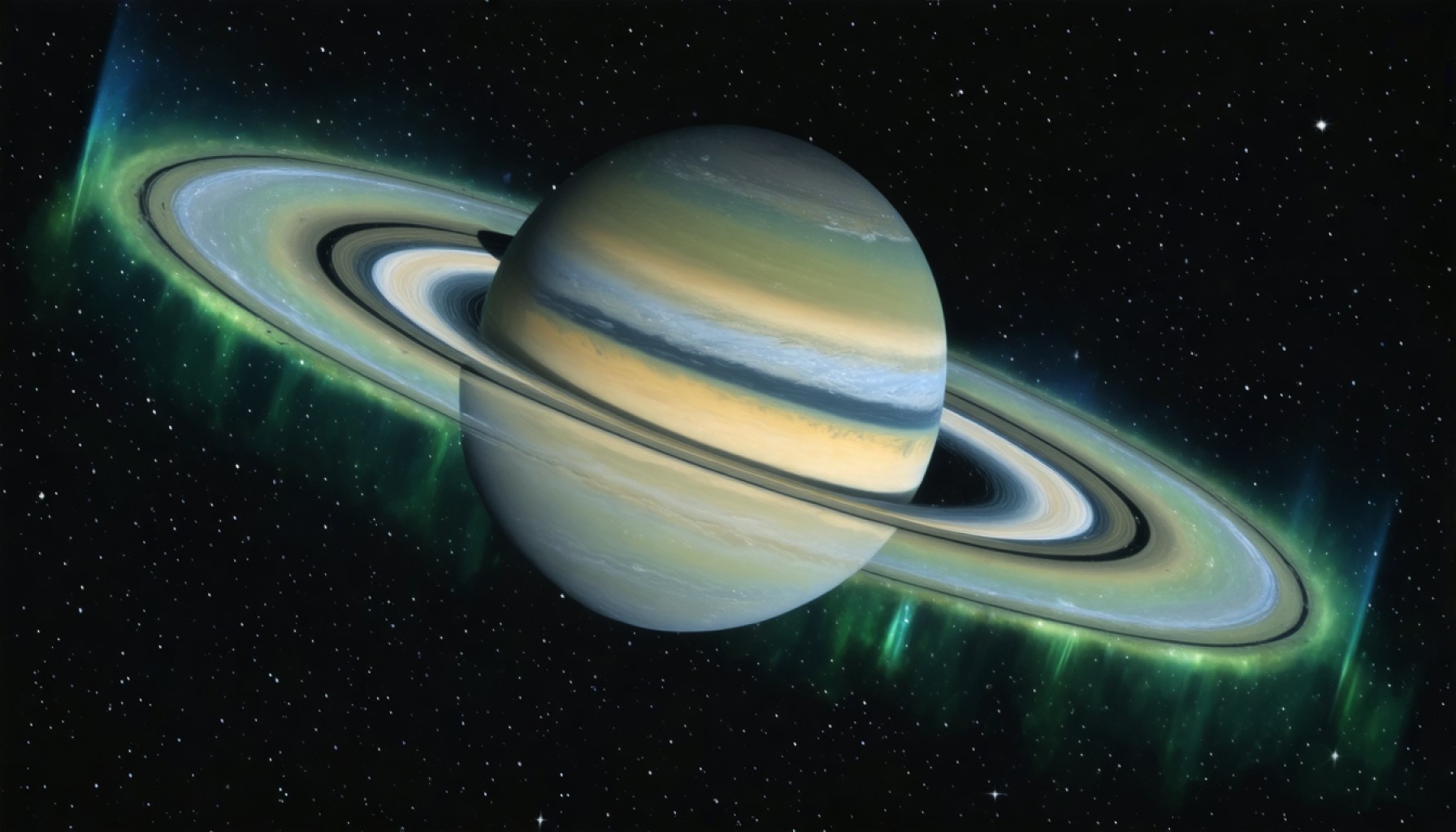- NASA’s James Webb Space Telescope captured mesmerizing auroras on Neptune, discovered in June 2023, lighting the ice giant’s atmosphere with cyan hues.
- These auroras appear at mid-latitudes on Neptune, distinct from Earth’s polar auroras, thanks to Webb’s Near-Infrared Spectrograph (NIRSpec).
- The discovery solved the decades-long mystery of Neptune’s auroras, first hinted at by Voyager 2 in 1989.
- The trihydrogen cation molecule, crucial to the auroras’ luminescent glow, was revealed by Webb’s infrared sensitivity.
- This finding advances scientific understanding of Neptune’s magnetic field and has implications for studying other ice giants and exoplanets.
- Webb continues to enhance knowledge of cosmic phenomena, emphasizing that the universe is full of hidden beauty and wonder.
The cosmos just got a little more mesmerizing, thanks to a breathtaking new discovery from the edge of our solar system. NASA’s James Webb Space Telescope has unveiled a spectacle on Neptune that’s both familiar and wondrous—auroras lighting up the ice giant’s frigid atmosphere. These vibrant displays, captured with unprecedented clarity, offer a tantalizing glimpse into the mysteries of this distant world.
Imagine the auroras that light up Earth’s polar skies with dancing curtains of green and red. On Neptune, these phenomena occur not at the poles but at mid-latitudes, gleaming in bright cyan thanks to Webb’s Near-Infrared Spectrograph (NIRSpec). This discovery, made in June 2023, paints a dramatic picture of Neptune’s upper atmosphere and its magnetic dance with the cosmos.
For decades, the aromatic glow of Neptune’s auroras was an enigma for astronomers. Voyager 2 hinted at their existence back in 1989, but the challenge lay in capturing these celestial lights with clarity. The trihydrogen cation, a molecule known for its luminescent glow during auroral events, finally revealed itself to the keen eye of Webb.
The telescope’s sensitivity to the infrared spectrum unlocked this cosmic puzzle, bringing the hidden beauty of Neptune’s skies into focus. The details, vivid enough to astonish seasoned scientists, highlight the intricate ballet between charged particles and the planet’s magnetic field.
This celestial revelation is more than a visual treat; it’s a scientific milestone. By grasping how auroras manifest in Neptune’s unique environment, researchers gain insights into other ice giants like Uranus and perhaps even exoplanets beyond our solar system.
As Webb continues to pierce the veil of space, the observatory transforms our understanding of planetary atmospheres across the cosmos. The discovery of Neptune’s auroras serves as a reminder that even in the vast darkness of our universe, there is light, beauty, and boundless wonder waiting to be discovered.
If these discoveries ignite your curiosity, keep looking up and pondering what other hidden gems await discovery in the celestial dance above.
Mesmerizing Aurorae: Neptune’s Celestial Dance Unveiled by the James Webb Space Telescope
The cosmos never ceases to astonish us, and the latest revelations from NASA’s James Webb Space Telescope have illuminated Neptune’s mysterious atmosphere with breathtaking auroras. This celestial spectacle, discovered in June 2023, not only enchants with its beauty but also enhances our understanding of the planetary dynamics within our solar system and beyond.
Real-World Use Cases and Scientific Implications
Studying Neptune’s auroras provides valuable insights into the planet’s magnetic field and atmospheric composition. Understanding the magnetic interactions leading to these luminous displays could help researchers draw parallels with other ice giants, such as Uranus, and even distant exoplanets. This data informs models predicting the behavior of celestial bodies under extreme conditions.
Features, Specs & Pricing of the James Webb Space Telescope
The James Webb Space Telescope (JWST), a marvel of modern engineering, is equipped with the Near-Infrared Spectrograph (NIRSpec) that captured Neptune’s auroras. This instrument is capable of measuring the light spectrum with unprecedented accuracy, crucial for studying celestial atmospheres. Costing approximately $10 billion, JWST represents one of the most significant investments in space exploration, promising groundbreaking discoveries.
Insights & Predictions: The Broader Impact
The detection of Neptune’s auroras opens new avenues for space exploration. As we refine our understanding of magnetic fields and atmospheric dynamics, we’re likely to discover more about planetary formation and evolution. These findings may also aid in the search for habitable exoplanets, as auroral activity can hint at the presence of magnetic fields that protect biological life from cosmic radiation.
FAQs: Neptune’s Auroras and the JWST
How did the James Webb Space Telescope capture the auroras?
The JWST’s powerful NIRSpec detected the auroras in the infrared spectrum, capturing the glow of trihydrogen cations in Neptune’s upper atmosphere, which Voyager 2 hinted at over three decades ago.
Why are the auroras on Neptune not at the poles like Earth’s?
Unlike Earth, where auroras are typically polar phenomena, Neptune’s auroras appear at mid-latitudes due to its unique magnetic field and atmospheric conditions.
What are the implications of this discovery for exoplanetary research?
By studying auroral activities on Neptune, astronomers can better understand the atmospheres and magnetic fields of distant exoplanets, enhancing the search for conditions conducive to life.
Pros & Cons Overview: James Webb Space Telescope
Pros:
– Exceptional infrared capability opens new windows into the cosmos.
– Enhances our understanding of planetary atmospheres and magnetic fields.
– Broad applicability from studying our solar system to distant galaxies.
Cons:
– High cost and complex deployment present challenges.
– Its location at L2 (second Lagrange point) limits repair and maintenance options.
Actionable Recommendations
To stay updated on these awe-inspiring discoveries and delve into space science, following credible sources such as NASA and engaging with citizen science projects can be highly rewarding. If you’re an educator, incorporate these findings into your curriculum to inspire the next generation of astronomers.
In conclusion, the visual symphony of Neptune’s auroras captured by JWST is more than just a captivating spectacle. It paves the way for groundbreaking research, further unraveling the mysteries of our universe. Keep your eyes on the skies and your mind open to the wonders that the cosmos has yet to reveal.
